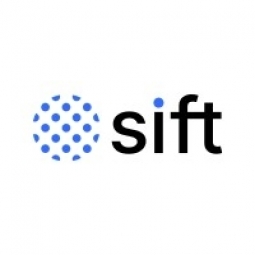公司规模
Mid-size Company
国家
- Worldwide
- Australia
产品
- Sift Payment Protection
技术栈
- Machine Learning
- Data Science
实施规模
- Enterprise-wide Deployment
影响指标
- Cost Savings
- Productivity Improvements
技术
- 分析与建模 - 数据即服务
- 分析与建模 - 机器学习
适用行业
- 金融与保险
适用功能
- 采购
用例
- 欺诈识别
服务
- 数据科学服务
关于客户
Banxa is one of the fastest-growing public payments and compliance infrastructure providers for the digital asset industry. The company enables the purchase of digital assets and currencies such as Bitcoin or USDT using traditional fiat currencies, such as Australian dollars, euros, and pounds. Every 15 seconds, someone purchases cryptocurrency with Banxa. In 2021, Banxa was recognized by The Silicon Review as one of the “50 fastest-growing companies of the year.” The global team spans across 10 countries and has grown from a team of 25 to 120+ globally in the course of a year. As a payments and compliance infrastructure company, Banxa provides a secure and regulatory-compliant payment channel for digital asset businesses, from exchanges and wallets to apps. Banxa’s on and off-ramp product manages the entire value chain—from easy implementation, Know Your Customer (KYC), Anti-Money Laundering (AML) to the customer and technical support—to provide a seamless, secure experience while being internationally compliant.
挑战
Banxa, a fast-growing public payments and compliance infrastructure provider for the digital asset industry, faced a significant challenge when its business volume increased by 30x. The company encountered multiple fraud scenarios, including fake profile creation, card fraud, scams, and chargebacks. Initially, Banxa had set up their own fraud function from scratch, handling everything manually when volumes were manageable. However, as Banxa began to grow, this basic model became too limited for their needs. It introduced unwanted friction for trusted customers and became riskier when incorporating multiple variables and increased velocity. So when Banxa’s volume spiked 30x, their fraud rate rose alongside it. The team knew they needed to implement something quickly to support their scaling business, which is where Sift came in.
解决方案
Banxa built their fraud operations around Sift and the platform has become a primary component of their fraud control model. The team leverages Sift Payment Protection to measure daily fraud and chargeback rates, identifying and responding to any fraud patterns associated with certain partners or transaction methods. Sift also fits nicely within Banxa’s value chain, both for order creation and payment risk. To protect order creation, the team leverages Sift’s network of device intelligence and user session tracking to prevent suspicious users from creating orders. And to protect against payment fraud, they utilize Sift’s machine learning and data science capabilities to construct highly effective and automated detection strategies. With these capabilities, Banxa can automatically accept, hold, verify, and decline orders based on routing and rules. The team has even created a multitude of different watch decisions to segment the various types of user behavior on a spectrum from trusted to risky. They use the explore function to look at common attributes of fraud cases and pinpoint exactly when a user goes from trusted to risky. This is especially useful for complex scam activity, as it can often look like regular customer behavior.
运营影响
数量效益

Case Study missing?
Start adding your own!
Register with your work email and create a new case study profile for your business.
相关案例.

Case Study
Real-time In-vehicle Monitoring
The telematic solution provides this vital premium-adjusting information. The solution also helps detect and deter vehicle or trailer theft – as soon as a theft occurs, monitoring personnel can alert the appropriate authorities, providing an exact location.“With more and more insurance companies and major fleet operators interested in monitoring driver behaviour on the grounds of road safety, efficient logistics and costs, the market for this type of device and associated e-business services is growing rapidly within Italy and the rest of Europe,” says Franco.“The insurance companies are especially interested in the pay-per-use and pay-as-you-drive applications while other organisations employ the technology for road user charging.”“One million vehicles in Italy currently carry such devices and forecasts indicate that the European market will increase tenfold by 2014.However, for our technology to work effectively, we needed a highly reliable wireless data network to carry the information between the vehicles and monitoring stations.”

Case Study
Safety First with Folksam
The competitiveness of the car insurance market is driving UBI growth as a means for insurance companies to differentiate their customer propositions as well as improving operational efficiency. An insurance model - usage-based insurance ("UBI") - offers possibilities for insurers to do more efficient market segmentation and accurate risk assessment and pricing. Insurers require an IoT solution for the purpose of data collection and performance analysis

Case Study
Smooth Transition to Energy Savings
The building was equipped with four end-of-life Trane water cooled chillers, located in the basement. Johnson Controls installed four York water cooled centrifugal chillers with unit mounted variable speed drives and a total installed cooling capacity of 6,8 MW. Each chiller has a capacity of 1,6 MW (variable to 1.9MW depending upon condenser water temperatures). Johnson Controls needed to design the equipment in such way that it would fit the dimensional constraints of the existing plant area and plant access route but also the specific performance requirements of the client. Morgan Stanley required the chiller plant to match the building load profile, turn down to match the low load requirement when needed and provide an improvement in the Energy Efficiency Ratio across the entire operating range. Other requirements were a reduction in the chiller noise level to improve the working environment in the plant room and a wide operating envelope coupled with intelligent controls to allow possible variation in both flow rate and temperature. The latter was needed to leverage increased capacity from a reduced number of machines during the different installation phases and allow future enhancement to a variable primary flow system.

Case Study
Automated Pallet Labeling Solution for SPR Packaging
SPR Packaging, an American supplier of packaging solutions, was in search of an automated pallet labeling solution that could meet their immediate and future needs. They aimed to equip their lines with automatic printer applicators, but also required a solution that could interface with their accounting software. The challenge was to find a system that could read a 2D code on pallets at the stretch wrapper, track the pallet, and flag any pallets with unread barcodes for inspection. The pallets could be single or double stacked, and the system needed to be able to differentiate between the two. SPR Packaging sought a system integrator with extensive experience in advanced printing and tracking solutions to provide a complete traceability system.

Case Study
Transforming insurance pricing while improving driver safety
The Internet of Things (IoT) is revolutionizing the car insurance industry on a scale not seen since the introduction of the car itself. For decades, premiums have been calculated using proxy-based risk assessment models and historical data. Today, a growing number of innovative companies such as Quebec-based Industrielle Alliance are moving to usage-based insurance (UBI) models, driven by the advancement of telematics technologies and smart tracking devices.
Case Study
Enhancing Security and Compliance in Remitly's Global Money Transfer Service with Fastly
Remitly, an online remittance service, was faced with the challenge of securing its proprietary global transfer network. The company needed a security solution that could meet PCI requirements and protect customers' sensitive transactions through its mobile application. The solution had to be capable of defending against new and emerging attack types without impacting performance. Remitly also had to deal with irregular traffic patterns, such as a sudden spike in account transfers from a small network segment on the Pacific coastline of South America. The company needed to determine in real time whether such traffic indicated an attack or valid requests. A traditional web application firewall (WAF) would not be able to distinguish this traffic, potentially leading to customer frustration if the IP was blacklisted.







